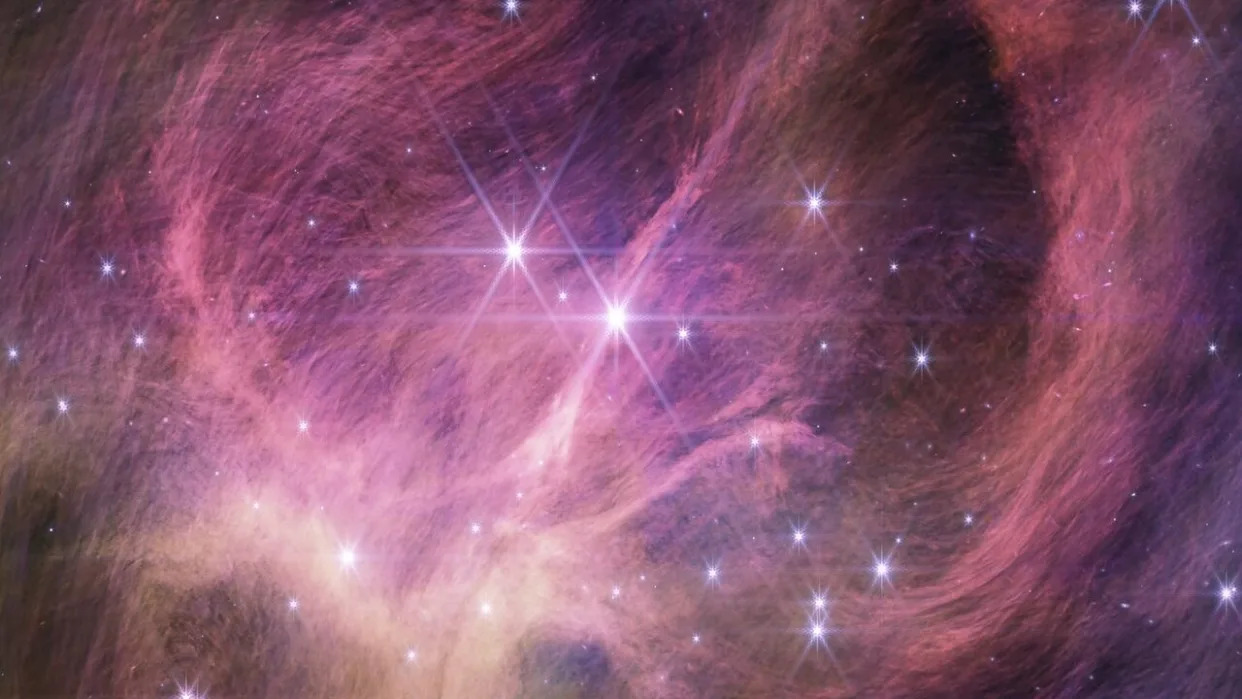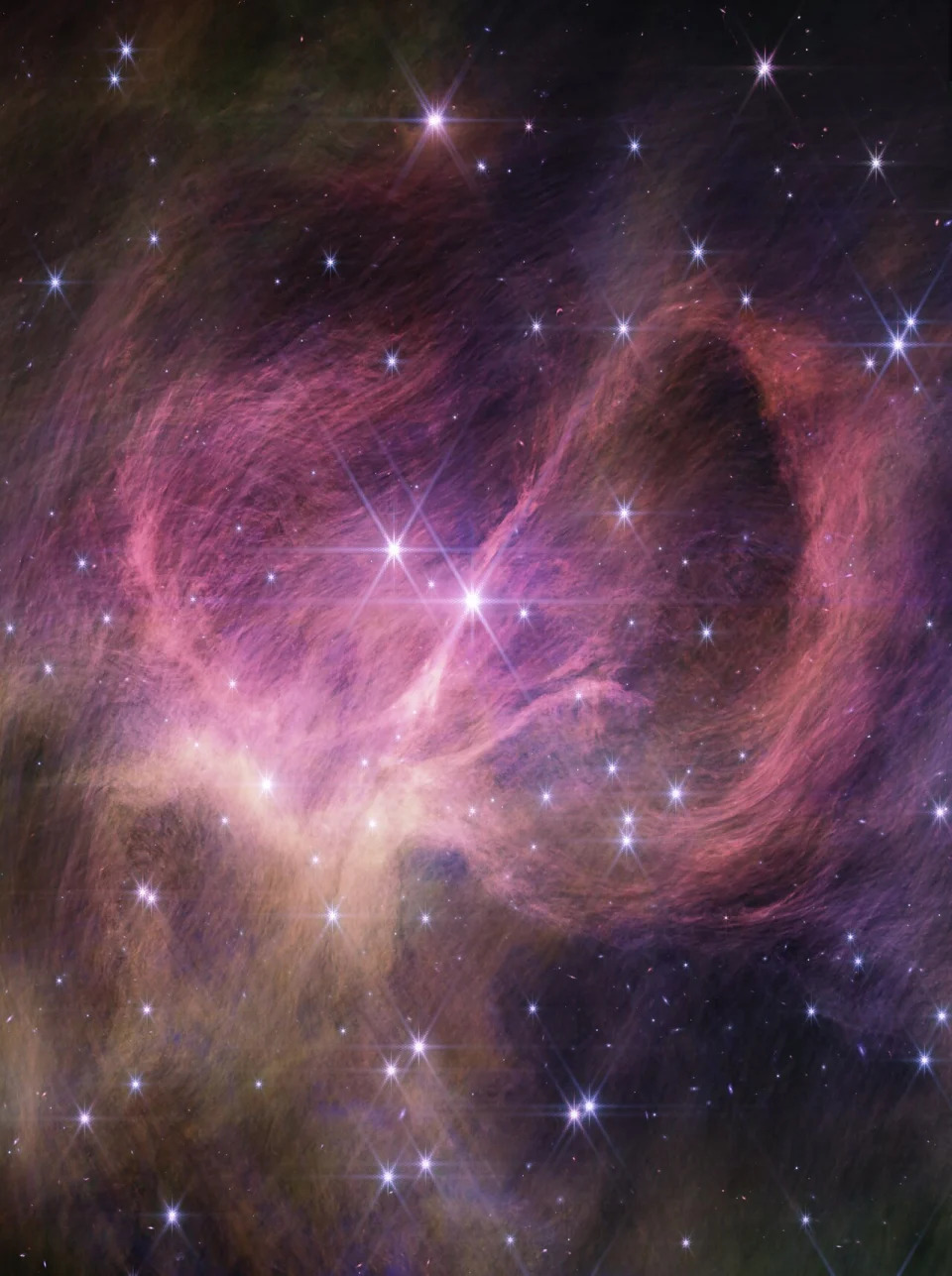Robert Lea
Wed, December 13, 2023

The star cluster IC 348 as seen by the JWST and where it spotted three "failed star" brown dwarfs. A pink and purple red gaseous nebula fills the image, many bright twinkling stars.
The James Webb Space Telescope (JWST) has spotted a record-breaking free-floating brown dwarf and two other so-called "failed stars" in a young star cluster just 1,000 light-years from Earth.
The record-breaking brown dwarf is not associated with a parent star and has a mass around eight times that of Jupiter. Meanwhile, the smallest one has a mass around three times that of Jupiter, making it a challenge to current theories about how these celestial objects are born. The discovery could help astronomers better determine where the line between planets and stars is drawn.
"One basic question you'll find in every astronomy textbook is, what are the smallest stars? That's what we're trying to answer," research lead author and Pennsylvania State University scientist Kevin Luhman said in a statement.
Related: 'Failed star' is the coldest radio wave source ever discovered

The star cluster IC 348 as seen by the JWST and where it spotted three
The team discovered these three brown dwarfs, including this new record breaker, when they trained the JWST's Near-infrared Camera (NIRCam) on the heart of the wispy gas and dust of the IC 348 star cluster, which lies within the larger star-birthing Perseus star-forming region. . Because of the youth of this cluster, the brown dwarfs within it are still glowing with infrared light, which is the result of heat left behind from their formation.
The most promising targets from this investigation were selected for a deep-dive follow-up investigation with the JWST's Near-Infrared Spectrograph (NIRSpec) micro shutter array. Sensitive enough to detect fainter objects than ground-based telescopes, NIRSpec allowed the team to distinguish brown dwarfs from back background galaxies, narrowing eight potential brown dwarfs down to three.
Why do some stars "fail"?

The three brown dwarfs seen by the JWST and their locations in IC 348
Brown dwarfs get their unfortunate "failed stars" nickname from the fact that they are born from collapsing clouds of gas, just like all stars are, but they never gather enough mass to trigger the nuclear fusion of hydrogen to helium with their cores — the process responsible for generating the majority of the energy and light a star puts out in its main sequence lifetime.
There is an overlap between star brown dwarfs and large planets, with many of these failed stars having masses a few times that of the solar system's most massive planet, Jupiter. Yet scientists aren't exactly sure what the smallest body that can be born like a star might be and at what minimum stellar mass the fusion of hydrogen to helium begins.
This is complicated by the fact that brown dwarfs aren't complete failures when it comes to nuclear fusion. They are believed to be massive enough to fuse heavy hydrogen — also known as deuterium — together in their cores.
RELATED STORIES:
— James Webb Space Telescope's 'Cosmic Christmas Bauble' earns spot in White House Advent Calendar (photo, video)
— Volunteers spot almost 100 cold brown dwarfs near our sun
— James Webb Space Telescope bites cosmic burger to create 1st ice map of planet-forming disk
The small brown dwarf in this young star cluster is a problem for star formation models because of the small size of the cloud of gas. A smaller cloud would have weaker gravity and should therefore struggle to collapse and birth such a small brown dwarf. Likewise, this diminutive brown dwarf should not have been able to form like a planet in this system, according to the astronomers behind this discovery.
"It's pretty easy for current models to make giant planets in a disc around a star," research principal investigator and European Space Agency scientist Catarina Alves de Oliveira said. "But in this cluster, it would be unlikely that this object formed in a disc, instead forming like a star, and three Jupiter masses are 300 times smaller than our sun.
"So we have to ask, how does the star formation process operate at such very, very small masses?"
No comments:
Post a Comment